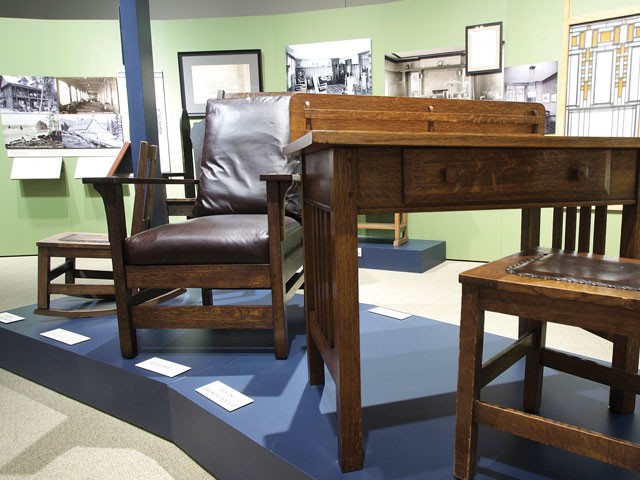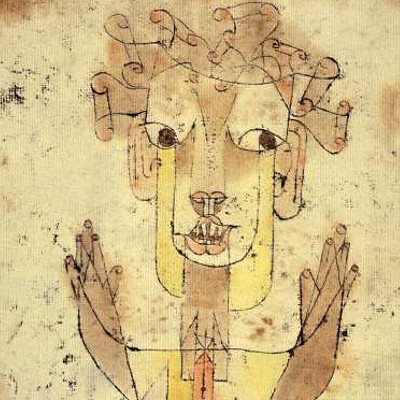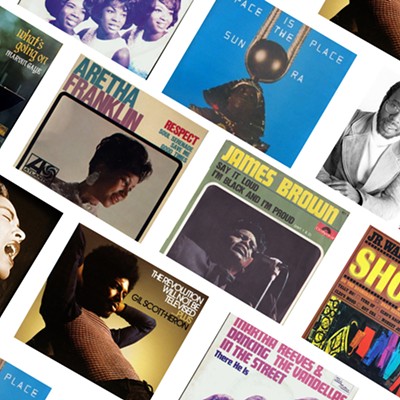A century ago, Spokane was at the peak of its glory. Massive mineral deposits in North Idaho had made Spokane a hub of gold and silver wealth. The city boasted a population of more than 100,000 people. There was an electric streetcar network. The famous Olmsted brothers firm (landscape architects who designed, among other things, New York’s Central Park) was brought in to consult on Spokane’s network of city parks.
The influx of wealth and people to the region called for a whole lot of new construction, and in the early 1900s the Arts and Crafts style was the order of the day. Even better, Spokane and the surrounding area were rich with timber and natural stone — resources vital to the Arts and Crafts philosophy of natural architecture.
“Spokane hit its boom at the turn of the 20th century, right at the time the Arts and Crafts movement was in full swing,” says Marsha Rooney, senior curator of history at the Northwest Museum of Arts and Culture. “And we’ve also seen a couple of periods of the movement’s revival here, so there are a lot of great examples of the style all over [Spokane].”
The MAC is currently hosting (through June 26) a traveling exhibit of items from the heyday of the Northwest’s Arts and Crafts period. Furniture, paintings, prints, photographs and home decor are featured in the museum’s gallery, many of them from the Davenport Decorative Arts collection — items from the family of hotelier Louis Davenport. A special Campbell House tour highlights the use of Arts and Crafts decorative arts in a household context.
“This movement was really all about looking at nature and drawing influences from nature, and to show ways to incorporate natural elements into a style,” says Rooney. “It’s the essence of handmade.”
The Arts and Crafts movement wasn’t about quilting and scrapbooking; it was a revolution in design and architecture. Its philosophy was rooted in rebellion against Victorian excess, industrialization and mass-production. The movement’s mantra was “head, heart and hand.”
“Not everything fits into neat little boxes, so anytime you hear ‘art speak’ it can be very confusing,” says Rooney. “Arts and Crafts can mean so many different things, but at its core it is about getting back to basics, handcrafting objects influenced by nature.”
The exhibit opened last month with an illustrated lecture by co-curators Glenn Mason and Lawrence Kreisman, authors of the book The Arts and Crafts Movement in the Pacific Northwest, a gorgeous, coffee-table tome full of historical information, photographs and reproductions of Arts and Crafts style. Mason, now co-owner of a consulting firm, is the former director of the Cheney Cowles Museum (the MAC’s ancestor) and helped secure many of the Arts and Crafts pieces in the museum’s permanent collection.
A partial reproduction of Louis Davenport’s personal apartment is one of the exhibit’s highlights. A beautifully organic, hammered-copper fireplace forms the centerpiece of the Davenport sitting room, framed by an elegantly simple stained-glass arch decorated with a highly stylized rose motif. The combination of rusticity and elegance perfectly illustrates the Arts and Crafts philosophy.
“There was a large amount of Arts and Crafts work done in Washington … during the first quarter of the twentieth century,” Mason and Kreisman write in their book. “However, with the exception of buildings, little of that legacy remains.”
The ubiquitous “Craftsman-style” home bears witness to the impact the Arts and Crafts movement had on the architecture in Spokane and the Inland Northwest. Along with the current exhibit, the MAC’s annual Mother’s Day tour this year focuses on some of the South Hill’s best examples of Craftsman homes, winding through some of the neighborhoods that sprouted up during Spokane’s boom.
The MAC is open Wednesday-Saturday, 10 am-6 pm. Admission is $7; $5, seniors and students; free for museum members. Visit northwestmuseum.org or call 456-3931.





















